Effective Use of Insecticides Against German Cockroaches


Intro
German cockroaches are more than just a nuisance; they can be a considerable health risk and an unwelcome guest in any home. These pests reproduce quickly and thrive in the crevices of our living spaces, often where we least expect them. Knowing how to identify them is the first step toward effective control and management. This guide dives into practical insecticide strategies tailored for homeowners and housewives aiming to reclaim their spaces from these unwelcome invaders. Here, you’ll find not only effective insecticide options but also holistic approaches to long-term pest management.
Pest Identification
Identifying the enemy is key in any battle, and in this case, knowing what you're up against is crucial for a successful extermination strategy.
Common Household Pests
German cockroaches (Blattella germanica) are small, usually about half an inch long, and are light brown to tan in color. They have two distinct dark stripes running from their head to their wings, giving them a somewhat distinctive appearance. However, they're not alone in the pest family. Other common household pests include:
- American Cockroach - Larger, reddish-brown and often seen in sewers.
- Oriental Cockroach - Also known as water bugs, they thrive in damp areas.
- Brown-banded Cockroach - Smaller with contrasting light bands across their wings.
Signs of Infestation
Recognizing signs of a German cockroach infestation can save you time and money. Some common indicators include:
- Droppings: Small, dark specks resembling pepper.
- Egg Cases: These oval-shaped cases, called oothecae, are brown and can contain up to 30 eggs.
- Shed Exoskeletons: As cockroaches grow, they molt, leaving behind their old. shells.
- Unpleasant Odors: A strong, oily scent can indicate a considerable infestation.
Being aware of these signs helps homeowners act promptly, reducing the chances of rampant growth and making pest control more efficient.
Prevention Methods
An ounce of prevention is worth a pound of cure; this rings especially true when it comes to keeping German cockroaches at bay. Strengthening your defenses can significantly lower the chances of infestation.
Environmental Modifications
Making adjustments in your surroundings can keep these pests from feeling at home. Here are some effective modifications:
- Seal Cracks and Crevices: Pay attention to areas around doors, windows, and baseboards.
- Reduce Moisture: Fix leaky pipes and use dehumidifiers in humid areas.
- Eliminate Food Sources: Store food in airtight containers and clean up spills immediately.
Home Maintenance Tips
Maintaining a clean environment is essential. Some best practices include:
- Regular Cleaning: Vacuum regularly to eliminate food particles and potential hiding spots.
- Dispose of Garbage: Take out the trash regularly and use containers with tight-fitting lids.
- Limit Clutter: A tidy house is less inviting to pests, as it minimizes hiding spots.
DIY Pest Control Solutions
Some folks prefer a more hands-on approach. If you lean towards DIY methods, there are options available for you to tackle cockroach problems.
Natural Remedies
Using natural remedies can be effective for minor infestations. Some suggestions include:
- Boric Acid: Sprinkle in areas where cockroaches travel; it's lethal when ingested.
- Diatomaceous Earth: This is a non-toxic powder that injures the exoskeletons of crawling insects.
- Soap and Water: A simple mixture can help eliminate roaches on contact.
DIY Traps and Barriers
Creating traps can reduce roach populations, albeit not a complete solution. Consider the following:
- Jar Traps: Apply a layer of petroleum jelly on the outer rim of a jar, place bait inside, and cockroaches will get trapped but not escape.
- Homemade Bait: Mix equal parts of sugar and baking soda; the sugar attracts the roaches, and the baking soda kills them once ingested.
Finale
In sum, addressing a German cockroach infestation means understanding both the nature of these pests and the various methods available for their control. By blending insecticides with preventive measures and DIY tactics, you can create an effective pest management strategy tailored to your home. This approach ensures that you're not just treating the symptoms but working toward a roach-free environment for the long haul. For further information, check resources like CDC Pest Control and University of Florida’s Pest Management for more detailed insights.
Understanding German Cockroaches
Understanding German cockroaches is crucial for effectively managing infestations. Recognizing their characteristics, biology, and potential health impacts can significantly improve pest control strategies. These pests are notorious for their rapid reproduction and adaptability, making them a common nuisance in households. Therefore, gaining insight into their behavior and biological traits is essential for anyone concerned with maintaining a healthy living environment.
Biological Characteristics
Lifecycle and Reproduction
German cockroaches reproduce at an alarming rate, a factor that makes controlling their population particularly challenging. Under ideal conditions, a female can produce up to 400 offspring in her lifetime. They reproduce through a lifecycle that includes eggs, nymphs, and adults, with nymphs maturing in just weeks. This swift development cycle complicates extermination efforts, as a few individuals can quickly turn into a full-blown infestation.
Understanding their lifecycle highlights the importance of early detection and intervention. Cockroaches tend to breed in hidden spaces, so knowing when to act is crucial. By addressing these areas early, homeowners can prevent an infestation from taking hold and avoid the need for more drastic measures later on.
Physical Traits
German cockroaches are relatively small, typically measuring around 1.5 to 2 inches long. Their brown coloration with two dark parallel stripes on their thorax makes them identifiable. This physical trait is significant because it helps homeowners differentiate them from other pests, like American cockroaches, which are more substantial in size and often easier to spot.
The small size of German cockroaches allows them to hide in tiny crevices, making them hard to eliminate. Knowing these traits aids in determining where to apply insecticides effectively, as the application needs to reach those nooks and crannies where they dwell. Their resilience to various treatments also means that homeowners must approach extermination with precision and care.
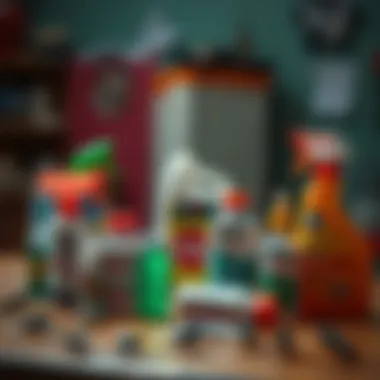
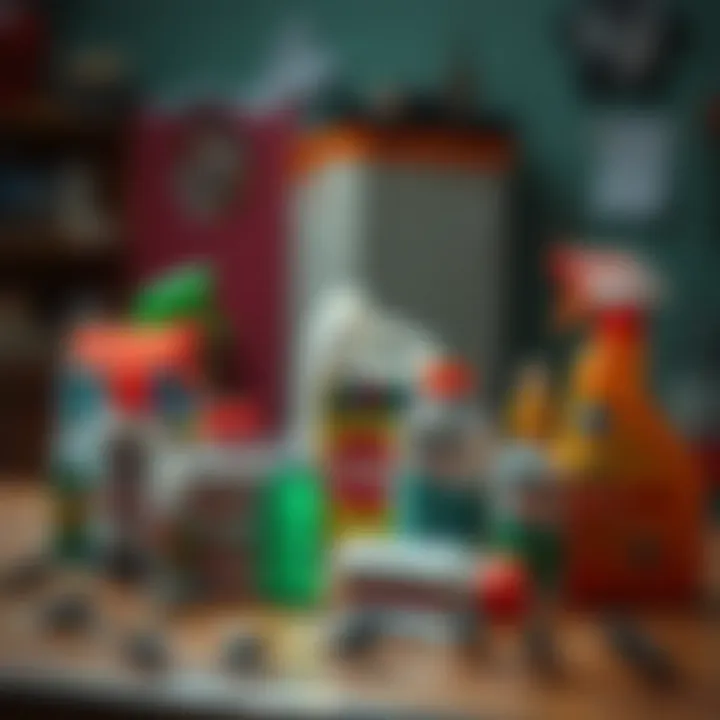
Behavior and Habitat Preferences
German cockroaches prefer warm, humid environments, often residing in kitchens and bathrooms. Their attraction to food and moisture makes these areas prime territories for infestation. Recognizing their preferred habitats allows homeowners to take preventive actions, such as maintaining cleanliness and sealing potential entry points.
Additionally, their nocturnal behavior means that they are often active at night, making them more challenging to spot during the day. This behavior highlights the need for strategic application of insecticides when the pests are most active, enabling better results during treatment. Understanding these behaviors not only facilitates targeted treatment but also aids in long-term management by identifying measures that can be taken to discourage their presence altogether.
Health Risks Associated with Infestations
Allergen Production
German cockroaches are known to produce allergens through their droppings, saliva, and cast-off skin. These allergens can trigger allergic reactions in sensitive individuals, leading to conditions like asthma and allergies. In households with children or elderly residents, the implications of these allergens can be particularly severe.
The key characteristic here is the allergens’ ability to remain airborne, impacting indoor air quality. This can make an infestation not just a nuisance but a serious health concern. Awareness of this aspect stresses the importance of immediate action when an infestation is detected, as delayed treatment may exacerbate health issues.
Pathogen Transmission
These pests are not just unpleasant; they can carry disease-causing pathogens. They have been associated with various illnesses ranging from gastroenteritis to more severe infections. Their habit of scavenging in unsanitary conditions, combined with their ability to transmit pathogens via contaminated surfaces, raises the stakes for homeowners struggling with infestations.
The significant health risks they pose highlight the necessity of effective control measures. Knowing that these insects can jeopardize health compels homeowners to take infestations seriously, fostering a proactive approach to pest management.
Psychological Impact on Homeowners
The presence of German cockroaches can lead to considerable psychological distress. Homeowners often experience anxiety and a sense of violation when confronted with an infestation. This impact can be profound; some individuals find it challenging to relax in their homes, leading to heightened stress and a negative overall quality of life.
The psychological aspect of infestations is often overlooked, but it underscores the importance of thorough pest control. It’s not just about eliminating insects; it’s about restoring peace of mind. By addressing the behavioral traits and health risks associated with German cockroaches, this article aims to provide not just practical solutions, but also a pathway to reclaiming the comfort of home.
Insecticides: An Overview
Understanding insecticides is crucial when it comes to managing German cockroach infestations. They are not just a quick fix; they form the backbone of effective pest control strategies. Proper knowledge of insecticides allows homeowners and pest management professionals to use these chemicals judiciously, maximizing effectiveness while minimizing risks. This section takes a closer look at what insecticides are, how they work, their application methods, and the significance of safety regulations associated with their use.
What Are Insecticides?
Insecticides are substances used to kill or manage pest populations, particularly insects. When it comes to German cockroaches, these chemicals play an invaluable role in keeping their numbers in check. While various types of insecticides exist, the overall goal remains the same – control the pest effectively without compromising safety.
Chemical Composition
The chemical makeup of insecticides varies widely, featuring active ingredients specifically designed to impact insect physiology. For example, pyrethroids are popular due to their rapid knockdown effect on pests. This makes them highly effective under many scenarios.
Another key characteristic is the potential for non-target effects; meaning that while they are lethal to cockroaches, careful selection helps ensure they do not harm beneficial insects. However, understanding dosage and application is critical. Incorrect use can lead to either failure in cockroach control or unwanted impacts on the surrounding environment. The careful balance of efficacy and safety makes choosing the right formulation essential.
Application Methods
Application methods of insecticides play a significant role in their effectiveness. Different forms such as sprays, granules, and baits cater to unique pest behaviors and habitats. Sprays can quickly target cockroaches in hiding spots, offering instant relief when facing an urgent infestation.
A unique characteristic of baits, on the other hand, is their ability to attract cockroaches and deliver poison over time. This slow-acting nature can, in some instances, lead to a more thorough elimination of the entire infestation as affected cockroaches share the bait with others in their colony. Each technique has its advantages depending on the severity and type of infestation.
Safety Regulations and Guidelines
Safety regulations surrounding insecticides cannot be overlooked. They protect applicators, the general public, and the environment from potential hazards associated with improper use. Most importantly, manufacturers are required to provide clear guidelines on how to safely apply their products.
One major consideration is the necessity of personal protective equipment, or PPE, while handling these substances. This regulation not only protects human health but also ensures that the insecticides are used in a manner that reduces the risk of unnecessary exposure. Adhering to these guidelines enhances the effectiveness of the pest control effort while minimizing health risks.
Types of Insecticides for German Cockroaches
The effectiveness of insecticides in combating German cockroaches comes from the variety of products available. Here, we’ll explore three significant types: contact insecticides, residual insecticides, and bait formulations.
Contact Insecticides
Contact insecticides act as a direct agent against German cockroaches. They work by being applied to surfaces where cockroaches are likely to crawl. A major benefit is their fast action; once a cockroach comes into contact with the active ingredient, it can be eliminated almost immediately.
However, a downside is that if the cockroaches do not encounter treated surfaces, the insecticide remains ineffective. Therefore, strategic application is essential to maximize its effectiveness.
Residual Insecticides
Unlike contact insecticides, residual insecticides remain effective on treated surfaces for an extended period, providing long-lasting protection. This property helps in preventing reinfestation, especially when used in strategic locations that cockroaches frequent.
The challenge? It requires a careful balance between efficacy and application. Over-application can lead to unnecessary exposure for humans and pets, while under-application may not provide the desired results. Thus, discerning when and where to apply can make a significant difference in overall effectiveness.
Bait Formulations
Bait formulations truly shine when it comes to targeting German cockroach infestations. Cockroaches are attracted to the bait, consume it, and then return to their hiding spots. The substance relies on more than one method of action to eradicate the insect population. Here’s where the biological process plays an essential role; affected cockroaches can potentially infect others, leading to a domino effect in pest control.
However, one must consider the potential for bait shyness in cockroaches. If they have previously encountered bait without success, they may avoid it in the future. Regular monitoring of bait stations is crucial to ensure continued efficacy and adjust strategies when needed.
In summary, insecticides are a vital part of managing German cockroach populations. Understanding their chemical formulation, application methods, safety guidelines, and the various types available sets the foundation for an effective pest control strategy. By making informed decisions, homeowners can tackle infestations efficiently and responsibly.
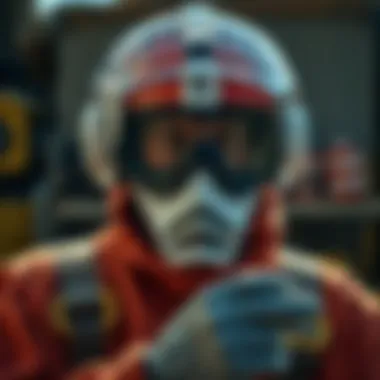

Application Techniques
The application techniques used in combating German cockroaches are essential for effectiveness and ensuring that the insecticides achieve their intended purpose. Proper methods maximize the efficacy of the treatments while minimizing risks to human health and the environment. The ensuing sections will delve into identification tactics, methodologies for application, and their significance in tackling infestations.
Identifying Infested Areas
Common Hiding Spots
German cockroaches are notoriously elusive, often taking refuge in warm and dark areas within human habitats. Common hiding spots like behind appliances, under sinks, and inside cabinets provide the perfect environment for these pests to thrive. Their preference for these locations stems from their innate need for moisture and warmth, making the kitchen and bathroom prime targets.
One of the key characteristics of common hiding spots is their proximity to food and water sources. This trait makes these areas not only popular for the cockroaches but also crucial for homeowners to monitor. Recognizing these environments helps in an early intervention, preventing a small problem from snowballing into a full-blown infestation.
However, while locating these spots eases the implementation of insecticide, it can be challengeng. They are often cluttered with other household items, making finding them tricky. Homeowners must be thorough and patient when inspecting these locations.
Signs of Infestation
Identifying the signs of a German cockroach infestation can be the first step towards tackling the problem effectively. The most notable indicators include droppings, the presence of egg cases, and a distinct, oily odor. Droppings often appear like tiny dark specks, and clusters of egg cases—known as oothecae—indicate a reproducing population nearby.
These signs are not only key in confirming an infestation but also in prompting timely action. When homeowners remain vigilant and proactive in spotting these indicators, it becomes easier to incorporate insecticide treatments before the situation worsens. The primary advantage of recognizing these signs is that it can prevent the need for more extensive treatments later on.
Nonetheless, one must regard these signs with caution as they can often be missed by the untrained eye. Therefore, thorough inspections at regular intervals are fundamental.
Timing of Application
The success of insecticide applications heavily hinges on timing. Applying treatments during peak activity hours of the cockroaches—generally at night—can greatly enhance the chances of effectiveness. Cockroaches tend to be nocturnal, so targeting them when they are most active means a higher likelihood that they will come into contact with the insecticide.
Additionally, considering factors like weather conditions and humidity can influence the success. For instance, applying insecticides during dry spells generally reduces chances of rapid breakdown and enhances the residual effect of the chemical agents.
Yet, improperly timed applications can lead to wasted products and increased resistance among cockroach populations. Homeowners should take care to plan their application strategically, bearing in mind the activity patterns of their uninvited guests.
Methodologies for Application
Using Sprays and Aerosols
Sprays and aerosols are popular choices in pest management due to their ease of application and immediate effects. These products often deliver active ingredients across surfaces, allowing for a thorough coverage that is quite effective in killing cockroaches on contact.
One important characteristic of sprays and aerosols is their ability to penetrate hidden crevices where cockroaches hide, ensuring that the insecticide reaches pests that might otherwise escape detection. This direct approach makes it highly beneficial, especially during an active infestation.
However, the challenge lies in ensuring proper application. Homeowners must adhere to safety protocols, as the volatile compounds can pose risks to human and pet health if not handled properly. Reading instructions and employing personal protective equipment becomes vital during this process.
Applying Baits Effectively
Baits can serve as an effective tool in managing German cockroaches, capitalizing on their natural behavior. These formulations generally combine attractive food sources with slow-acting insecticides, which the cockroaches consume before returning to their nests. This strategy leads to broader exposure among the population, allowing the contaminants to spread throughout.
The primary advantage of using baits is that they can target cockroaches over prolonged periods, giving the insecticides enough time to act before the affected insects can scurry off and reproduce. Proper placement is crucial, however, as baits must be situated in areas heavily traveled by the pests for maximum impact.
On the downside, baits may require more patience, as results may take longer to observe compared to sprays. Fewer immediate results can lead to frustration, but patience often pays off in pest management.
Integrating Traps with Insecticides
The integration of traps with insecticides presents a synergistic approach to managing German cockroaches. Traps can provide immediate feedback on the efficacy of treatments while also helping to reduce cockroach populations in tandem with chemical applications.
Traps are instrumental in monitoring cockroach movements and identifying hotspots. This allows for more informed decisions regarding insecticide application, targeting specific areas that show significant activity. Using traps makes it easier to track progress over time, guiding homeowners on when further intervention may be necessary.
The drawback is that reliance on traps alone will not eliminate an infestation. They serve best as a complementary tool within a broader pest management strategy. Proper integration encourages an environment conducive to reducing overall cockroach populations.
Culmination
By adhering to these application techniques and addressing common pitfalls, homeowners can effectively tackle German cockroach infestations. Each aspect from identifying infested areas to employing effective methodologies for application plays a significant role in managing these pests efficiently.
Safety Considerations
When it comes to tackling German cockroaches, safety considerations play a pivotal role not only for effectiveness but also to ensure the well-being of individuals and the environment. Understanding the risks involved, both from the insecticides used and the pests themselves, can lay a more solid groundwork for effective pest management. Adhering to safety practices helps in mitigating potential hazards while building a safer environment for everyone.
Protecting Human Health
Personal Protective Equipment
Personal Protective Equipment (PPE) acts as a first line of defense for those applying insecticides. It includes gloves, masks, and goggles, which protect against direct exposure to chemicals. Wearing the right PPE is especially critical when working in enclosed spaces where sprays are commonly applied. A notable characteristic of PPE is its adaptability—different materials and designs cater to various application methods. For example, disposable gloves can be useful for quick applications, while chemical-resistant boots provide extra protection. However, a downside to PPE is that it can often be uncomfortable, especially during extended use. This discomfort may deter consistent application, which is vital for effective insecticide management.
Ventilation Requirements
Ensuring proper ventilation is another significant aspect when applying insecticides indoors. Good airflow helps disperse harmful chemicals, minimizing inhalation risks for those present. The key characteristic of ventilation is that it not only reduces concentration levels of airborne toxins but also speeds up the chemicals' breakdown process. Opening windows and using fans can enhance safety during applications, allowing for healthier living conditions. However, leaving windows open may inadvertently invite more pests or disrupt indoor temperature control. Balancing ventilation is critical for achieving an effective pest management strategy without compromising comfort or safety.
Child and Pet Safety
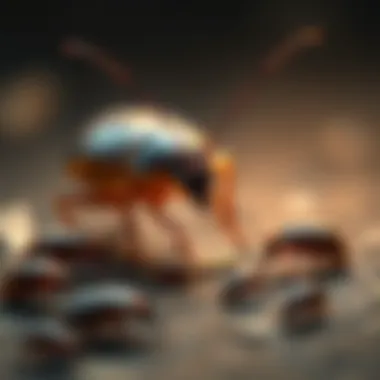
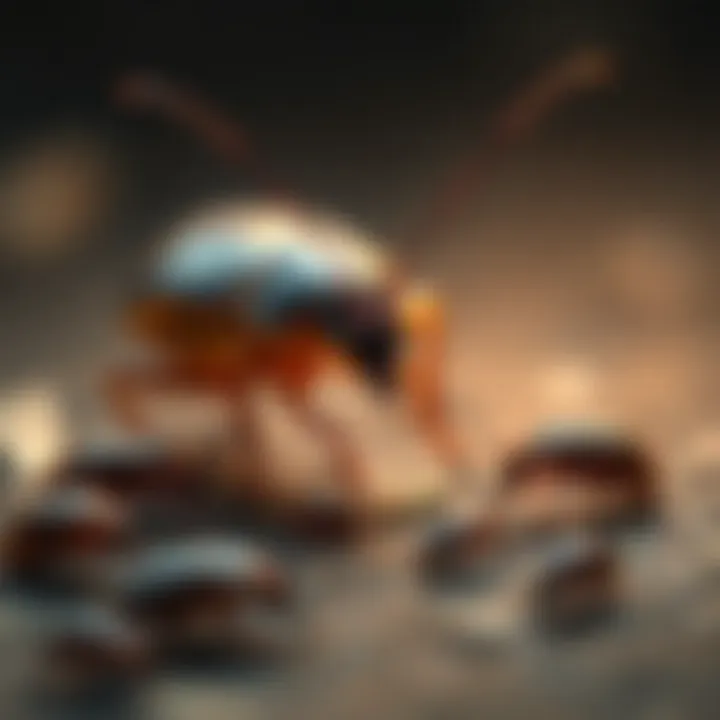
Considering child and pet safety is paramount in any pest control effort. Many insecticides are hazardous to living organisms, especially vulnerable ones like children and pets. An essential characteristic of maintaining child and pet safety is selecting targeted treatments that minimize exposure. Using bait formulations can often be a more controlled and safer approach, as they limit broader aerosol dispersal. However, a unique feature of this safety measure is the need for strict supervision; even safely placed baits can be accidentally accessed, posing risks. Regularly educating household members on pest management practices can significantly bolster safety while effectively keeping those unsavory cockroaches at bay.
Environmental Impacts
Effects on Non-Target Species
One crucial aspect of pest management is understanding the effects on non-target species. Insecticides, though designed for cockroach control, can have unintended consequences on beneficial insects and wildlife. The key characteristic of this consideration is that the insecticide can disrupt local ecosystems. For instance, applying a broad-spectrum insecticide can decimate beneficial bug populations, leading to larger ecological imbalances—think about pollinators like bees that are vital for plant reproduction. Using selective insecticides that target specific pests minimizes this risk but could be less effective in diverse infestations.
Soil and Water Contamination
Soil and water contamination represents a pressing concern when applying insecticides. When chemicals leach into the ground or find their way into water sources, the impacts can be devastating for ecosystems and human health alike. One unique feature of this issue is the persistence of many insecticides in the environment, which can result in lasting damage or bioaccumulation in food chains. Choosing formulations with lower environmental persistence can help, but often, these safer choices are less potent against pests, requiring more frequent applications and vigilance in monitoring effectiveness.
Best Practices for Minimizing Harm
Adopting best practices aids in minimizing harm to both health and the environment during pest management. These practices involve careful planning and execution of insecticide applications, such as taking the time to read labels, using recommended dosages, and ensuring good timing for applications when weather conditions are favorable. Pesticide drift can be reduced by applying products in calm weather, preventing them from traveling to unintended areas. Balancing efficacy and safety creates a more sustainable pest management strategy that doesn't come at the expense of terrestrial or aquatic ecosystems.
Integrated Pest Management Approaches
Effective management of German cockroaches hinges on more than just the direct application of insecticides; it requires a robust strategy that encompasses various techniques. Integrated Pest Management (IPM) approaches take into account the life cycle of the cockroach, the environment, and human health and safety, aiming to achieve long-term pest control while minimizing risks associated with chemical treatments. This holistic perspective allows homeowners to tackle infestations strategically, rather than just reactively.
Combining Techniques for Efficiency
Use of Biological Controls
Biological controls involve utilizing natural predators or parasites to manage pest populations. For German cockroaches, this might include introducing certain nematodes that prey on their eggs or juvenile forms. The key benefit of biological controls is their ability to work in conjunction with other pest management strategies, creating a more sustainable approach.
Unique Feature: Biological controls are self-sustaining, meaning they can continue to manage pest levels over time without the need for continuous chemical intervention. However, their effectiveness can vary based on environmental conditions and the presence of adequate food sources.
Preventive Measures and Sanitation
A critical component in reducing German cockroach populations is good sanitation practices. Preventive measures such as regular cleaning to eliminate food sources, sealing entry points, and reducing clutter create an unfavorable environment for these pests. Keeping kitchens and bathrooms dry and tidy can drastically reduce the likelihood of an infestation.
Unique Feature: This proactive strategy is cost-effective and promotes a cleaner living space. However, it does require the vigilance and commitment of homeowners to maintain ongoing cleanliness.
Monitoring and Evaluation
Ongoing monitoring is vital for assessing the effectiveness of pest management strategies. This could involve inspecting commonly infested areas regularly and employing traps to gauge population levels. Understanding the dynamics of cockroach populations in your home helps to adapt strategies promptly.
Unique Feature: Monitoring enables homeowners to catch infestations early, which is crucial for successful management. The downside might be that not all homeowners may opt to spend the time needed for precision monitoring.
Sustainable Pest Management
Ecological Considerations
Sustainable pest management takes a holistic view of pest control, integrating ecological principles to protect natural ecosystems while controlling German cockroach populations. By focusing on methods that respect biodiversity, such as habitat enhancement for natural predators, homeowners can create a balanced approach.
Unique Feature: Conservation of beneficial insects often accompanies ecological practices, although identifying appropriate strategies can sometimes be challenging and requires knowledge of local ecosystems.
Community Involvement in Pest Control
A neighborhood or community approach can enhance pest management efforts. Local groups can share resources, such as pest control tools or information about effective methods. Involving the community not only amplifies the impact of pest management but fosters a shared responsibility for environmental health.
Unique Feature: This method can lead to innovative solutions discovered through collaboration, though it may require concerted efforts to organize and motivate community members.
Educating Homeowners on Prevention
Education plays a crucial role in empowering homeowners to take charge of their pest control efforts. Programs that inform homeowners about the behavior of German cockroaches and the best practices for prevention can drastically reduce infestations.
Unique Feature: Knowledge shared through community workshops or online platforms can enable individuals to become proactive rather than reactive. The limitation lies in ensuring that the information is accessible and engaging for the target audience.
Epilogue
In tackling the issue of German cockroach infestations, following structured approaches in the application of insecticides stands as a key pillar. Understanding their lifecycle and behavior helps in choosing the right methods and products. But as we move forward, analyzing current trends and developments gives us insight into more effective means of management. This is crucial for households that want to minimize intrusion without compromising their living spaces.
Future Directions in Cockroach Control
The future of pest control involves more than just using bugs sprays or baits. The field is seeing advancements that promise to reshape our strategies.
Research Advancements
Recent strides in research have produced findings that assist in designing targeted insecticides. New formulations are being tested, focusing on the biology of the cockroach to disrupt their reproductive habits. One of the main characteristics of these advancements is their specificity, which means they can target German cockroaches while limiting effects on other beneficial insects. This can be exceptionally advantageous as it minimizes environmental impact while improving control efficiency. However, continuous research is necessary to stay ahead of evolving pest resistance.
Emerging Technologies
New technologies have also revolutionized pest management systems. Integrating real-time monitoring devices, for instance, now allows homeowners to track cockroach activity via mobile applications. This characteristic of technological integration makes it easier to respond proactively to infestations, rather than reactively. Still, with new tech come challenges, such as the need for training and the possible costs involved in equipping homes with these devices.
Case Studies on Successful Management
Examining successful management strategies through case studies can provide invaluable insights. For instance, one notable case involved a community that engaged in a comprehensive pest management program combining both chemical and biological methods. It showcased the effectiveness of public awareness and collective action in minimizing infestations. The key feature of these studies is that they reveal practical applications of theory, underscoring the fact that community involvement significantly enhances pest control outcomes. The drawback, however, lies in varied community participation; not every homeowner may prioritize such initiatives.
In summation, the journey towards effective cockroach control is an evolving one, where each advancement builds upon the last. Understanding the importance of ongoing education and innovation ensures that homes remain safe and pest-free.















